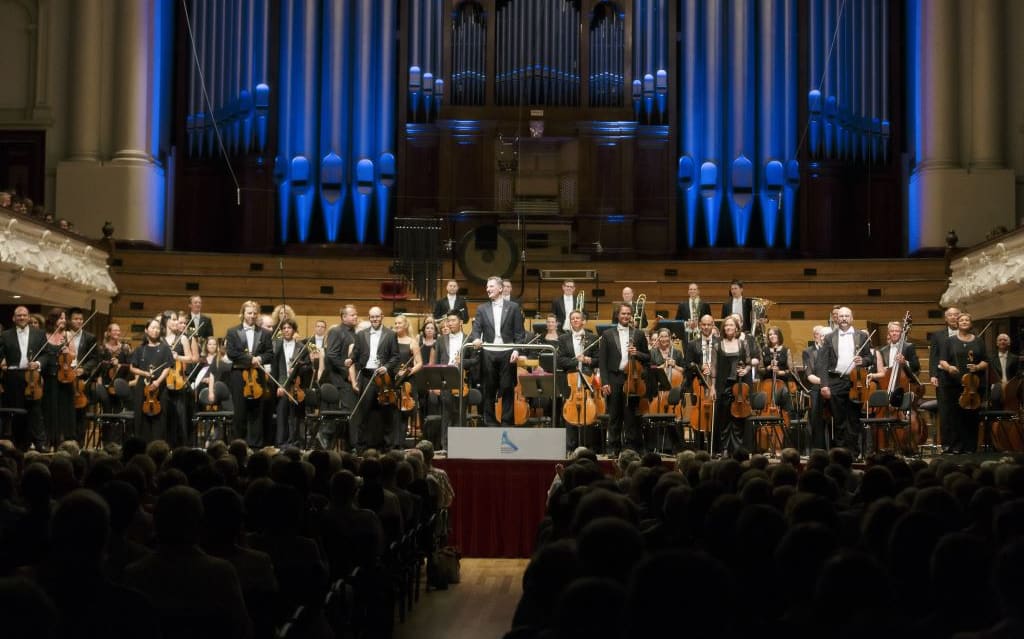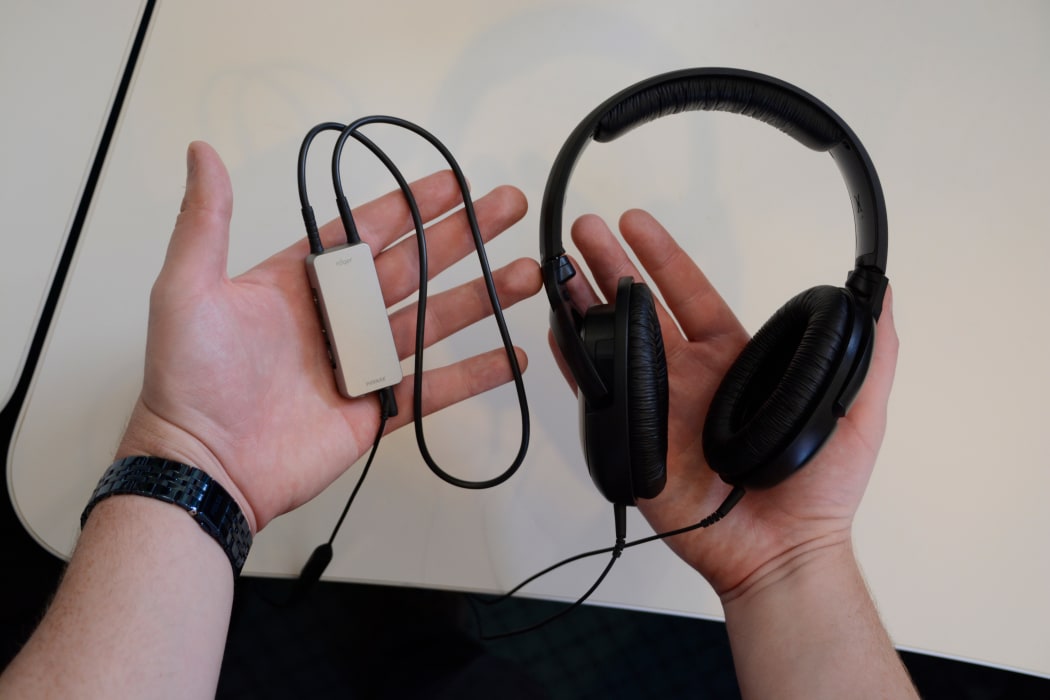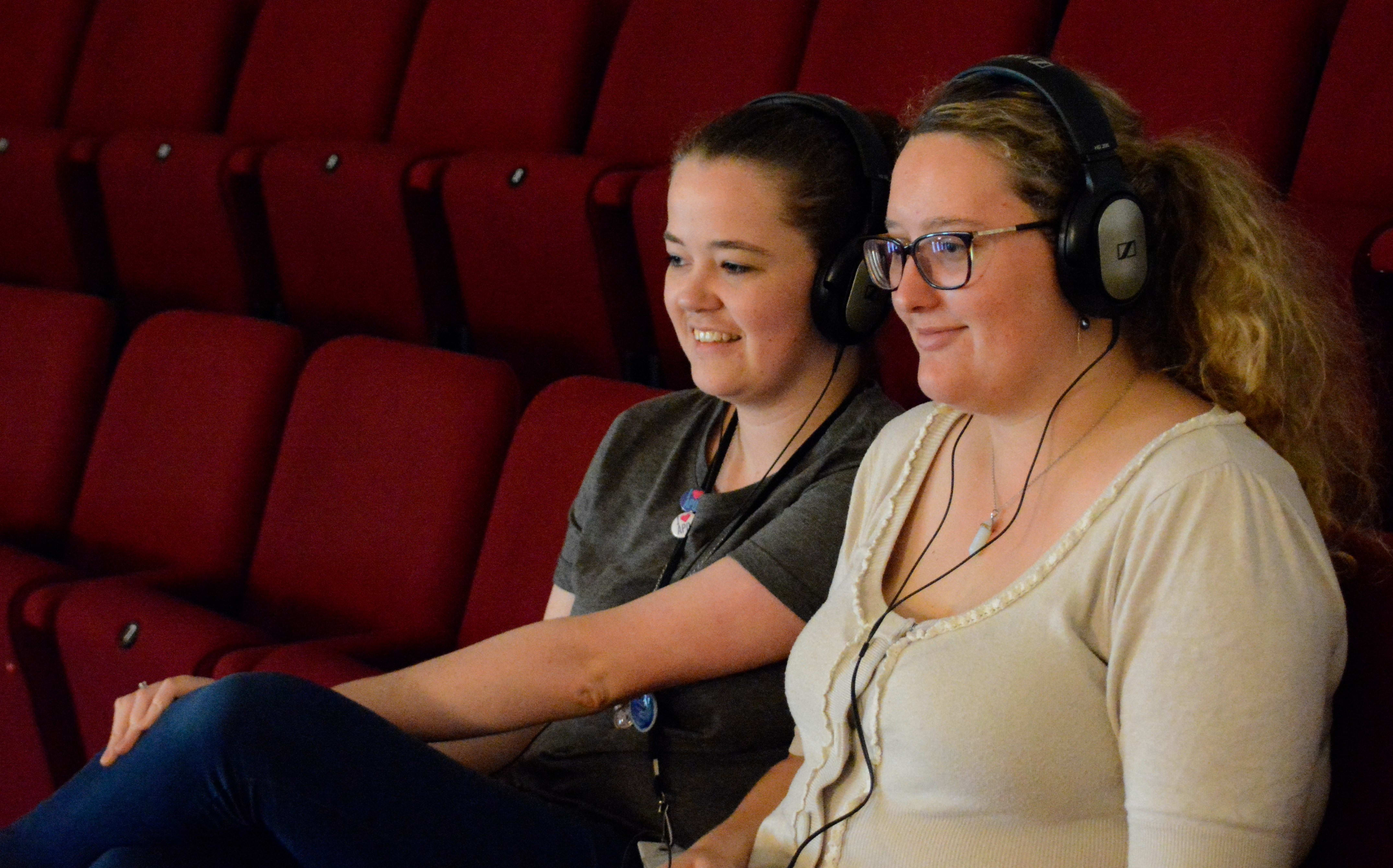In a possible world-first the Auckland Philharmonia Orchestra is exploring ways to help those who find loud, busy spaces overwhelming.
A new device will allow those with Autism and hearing sensitivity to enjoy live orchestral performance.

Auckland Philharmonia Orchestra Photo: Adrian Malloch
Last night three audience members trialled the device, where a feed of the orchestra is sent from the sound engineering board into the devices. A remote control allows the headphone wearer to adjust the volume to suit themselves.
Members from Autism New Zealand were among the crowd to hear works by Salina Fisher, Beethoven and Nielsen. The organisation’s outreach co-ordinator Megan Stokes was one of the first to use the new devices. She says loud, busy spaces can be a source of anxiety for many with hearing sensitivity.
She says the devices block out a lot of the noise from the room – first people chattering and then the orchestra on stage. She says it’s now opened a whole new world for those with Autism and hearing sensitivity. “It allows people who wouldn’t be able to experience that to be able to attend the concert,” she says. “A lot of people [get] overwhelmed by the noise. So, they can control the noise and it might allow them to stay in that space.
“Events like this highlight where some of our people can miss out on normal everyday things that other people take for granted.”

The device being trialled by the APO to help those with hearing sensitivity Photo: Supplied
The APO worked with Arts Access Aotearoa on the creation of the pilot programme that received funding in February from a local philanthropist. Phonak Audio provided the system used in last night’s trial.
Tom Hamill, Director APO Connecting, says the system also has the capability to work alongside certain types of hearing aids and can boost sound for those who are deaf. There is also the possibility for audio description to be added for blind and low-vision concert-goers.
He says he’s not aware of any other orchestras creating bespoke programmes for those with hyper-audio sensitivity. He says he hopes the APO audiences will be able to access the devices at other APO events in the future. “In APO Connecting we believe that Music Opens Minds and as such we want to be able to offer the joys of classical music to everyone regardless of disability,” he says. “We are at the start of something exciting and really breaking down barriers for inclusion into orchestral music for people that may have felt excluded in the past.
“Of course everyone is welcome currently; but we are hoping that an innovative technology solution will bring those who may have had second thoughts about attending into the fold.”

The APO's Katie Deller and Rowan Newton test out the new device to help those with hearing sensitivity at concerts Photo: Supplied
According to the World Health Organisation approximately one in 57 people sit on the Autism spectrum. Megan Stokes says the spectrum ranges from high functioning to those who need 24-hour care for the rest of their lives. She says those with Autism Spectrum Disorder can have a sensitivity to taste, smell, touch and sound. “They are an attack for someone on the spectrum,” she says.
While wearing the device she had lots of questions from other audience members. She says it’s good that people are interested in the trial. “It’s about neuro-typical people changing their attitudes to someone with Autism,” she says. “We can change, but the person with Autism can’t.
“You don’t expect someone in a wheelchair to get up and walk. It’s about being kind, patient and caring.”
The APO have also started offering more relaxed performances, but Megan says a few smaller changes will make going to the orchestra an easier experience for those with Autism. More space between seats, having a special area for people using the devices and having a meet-and-greet person will help.
Tom Hamill says the APO is continuing to look at new ways to engage with this audience. “There are endless opportunities to add additional access ideas to our concert offering,” he says. “One thing we will add to the hearing support will be some social stories for patrons to access before concerts to lessen anxiety as they attend concerts.”

